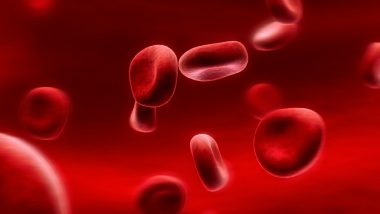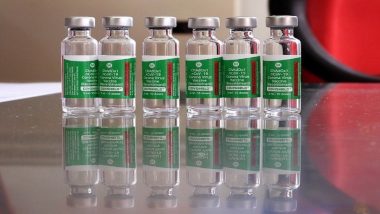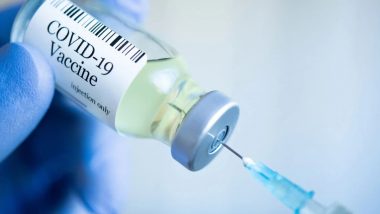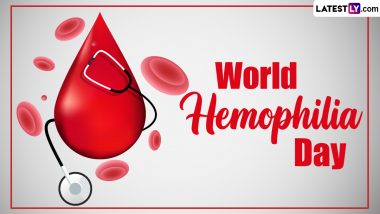Every year on April 17, World Haemophilia Day is observed to focus public attention on haemophilia, an inherited blood clotting disorder, which affects one in every 5000 men. Affected individuals fail to make enough of certain proteins needed for the formation of blood clots. They are deficient in clotting factors such as VIII (haemophilia A) or IX (haemophilia B), causing patients to bleed spontaneously inside the body, especially the knees, ankles and elbows. A person born with this condition has little or no protein that is required for normal blood clotting. This protein helps platelets (blood cells that prevent you from bleeding) bind with each other to plug cuts or injuries. In the absence of this proteins, platelets cannot bind and the affected person is at the risk of excessive blood loss, following a surgery or trauma. This type of bleeding can damage internal organs and tissues, and can pose life-threatening risk for the sufferer.
What are the Types of Haemophilia?
There are two main types of haemophilia – type A and type B. The former is caused due to a deficiency of clotting factor VIII and the latter due to clotting factor IX. Symptomatically, they are quite identical. Mild haemophilia has 5-40 percent of normal clotting factor. Moderate has 1-5 percent and severe cases of haemophilia has less than one percent of normal clotting factor.
What Causes Haemophilia?
Haemophilia is an inherited disorder caused by a mutation of genes. However, 30 percent of people with haemophilia have no history of the disorder in their family. In cases were no family history is seen, a spontaneous mutation of the genes in charge of producing clotting proteins is thought to be the cause.
These genes are located on the X chromosomes. Women have two X chromosomes (XX) and men have one X and one Y chromosome (XY). The ones who carry the X chromosome has the genes related to clotting factors. Men who carry a haemophilia gene on the X chromosome will get haemophilia. When a woman has haemophilic gene on one of her X chromosome, she becomes a carrier of haemophilia and can pass it on to her children.
What are the Symptoms of Haemophilia?
Since haemophilia is a bleeding disorder, early signs of the disease would manifest as excessive bleeding and easy bruising of the skin.
Excessive bleeding: Children may experience excessive bleeding from nicks and cuts. Spontaneous bleeding from the mouth and nose, and bleeding that resumes from a cut which had stopped bleeding some time ago are some of the other signs.
Bleeding in the joints: Internal bleeding is also seen in haemophilia in parts such as elbows, joints and knees. When the bleeding starts, only a swelling is seen without any pain. Eventually, the joint area becomes hot to touch, swells up and cannot be bent. The pain can be severe and if it is not treated, the bleeding can cause irreparable damage to the joint.
Brain haemorrhage: One of the biggest risks of haemophilia is the threat of brain bleeding. Even a small injury or bump to the head can trigger a possible brain bleed. Some of the symptoms of bleeding inside the brain include: headaches, neck pain, disoriented behaviour, sleepiness, vomiting, convulsions, seizures, double vision and lack of coordination between the limbs.
How is Haemophilia Treated?
Replacement therapy: Haemophilia is treated by giving concentrates of clotting factor, either VIII or IX, to the patient. These concentrates are made from human blood and are treated to prevent infections such as hepatitis or HIV, although the risk is low. They are either administered through a drip or injected into a vein.
To reduce the risk, the patient can be given clotting factor concentrates that are aren’t made from human blood called recombinant clotting factors. Replacement therapies can be given either on a regular basis to patients or as a curative measure to stop bleeding.
Desmopressin: It is a man-made hormone that treats people with mild haemophilia A. It cannot be used for severe cases or for haemophilia B. The hormone helps by stimulating the release of the clotting proteins in the blood. It’s either administered by injection or as a nasal spray. Since the effects wear off soon, it has to be taken often.
Antifibrinolytic Medicines: These drugs such as tranexamic acid and epsilon aminocaproic acids can be used along with replacement therapy. They are administered as pills and they prevent the breakdown of blood clots.
Gene therapy: Gene therapy involves finding ways to correct haemophilia at the gene level. While it hasn’t been developed as a full-fledged therapy for haemophilia, researchers are still exploring the possibility altering the faulty genes.
World Haemophilia Day is observed to increase awareness of the disorder and other inherited bleeding diseases. The idea is to raise awareness to ensure better diagnosis of the disorder and to enable access to better care for patients around the world. This year, the theme of World Haemophilia Day is "Sharing Knowledge Makes Us Stronger." In solidarity with the day, monuments across the world lights up it red in order to spur conversations about the disorder and to spread knowlege. Qutub Minar of Delhi has already been bathed in the colour, to bring public attention towards haemophilia.
(The above story first appeared on LatestLY on Apr 17, 2018 12:06 PM IST. For more news and updates on politics, world, sports, entertainment and lifestyle, log on to our website latestly.com).


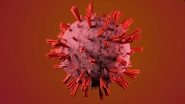










 Quickly
Quickly









